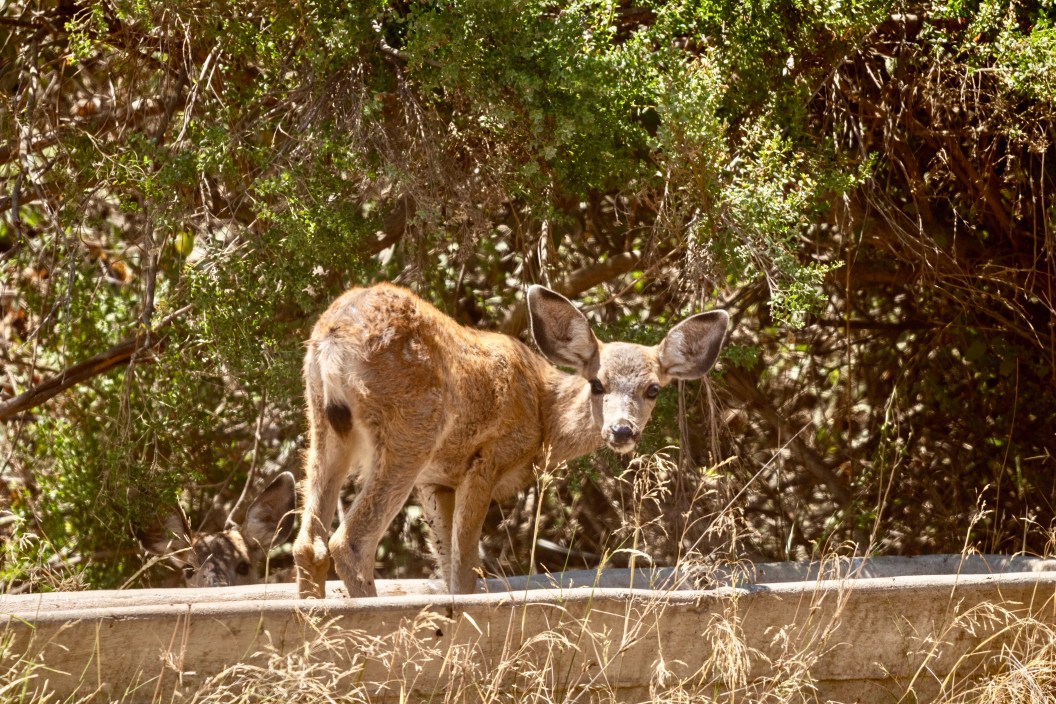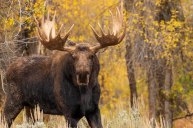Off the coast of Southern California sit the Channel Islands, eight remarkable self-sustaining ocean ecosystems that are home to a plethora of rare animal and plant species. Santa Catalina Island, known simply as Catalina and the archipelago's most famous land mass, is usually known for its charming towns, impressive scuba diving, or challenging hiking on Mt. Orizaba, its highest peak.
But recently, the quaint island has been thrust into the spotlight for a controversial proposal: The Catalina Island Conservancy has proposed eradicating the island's mule deer population—and to do so by shooting them from helicopters. This bold measure, the Catalina Island Conservancy says, is critical to save Catalina's native flora and fauna.
But some local residents are calling the practice inhumane.
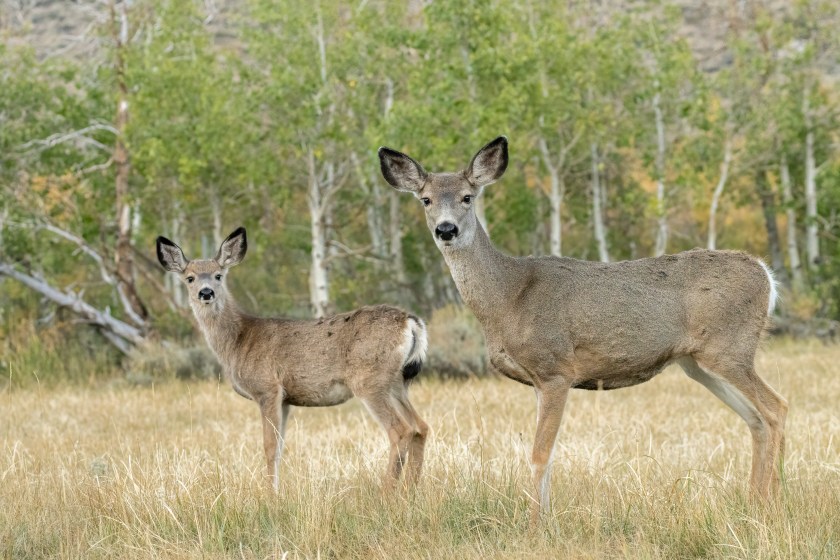
Getty Images, Bob Gwaltny Photography
Catalina's mule deer were brought to the island over 100 years ago to be hunted as a game species. With no natural predators, their population grew dramatically to roughly 2,000. Today, the sight of mule deer has become part of the culture of the modern island.
Like any successful invasive species, the mule deer of Catalina adapted quickly to the unique vegetation that grows there. The mule deer now eat so much of Catalina's plant life, including rare flora that exists only on the island, that it's rendering some species endangered. The island's mule deer tend to graze on delicacies such as the Catalina Mountain Mahogany, Catalina Nightshade, and the Southern Island Bush Mallow, which is so rare it only exists on two single rocks on the whole island.
In short: The Catalina Island Conservancy says the mule deer are disrupting the island's ecosystem.
Mule deer grazing has also caused the loss of natural habitat that other native species depend on. And without its lush plant life to capture the water from the island's fog, Catalina is more at risk of drought and fire, Lauren Dennhardt, senior director of conservation at the Catalina Island Conservancy, tells Wide Open Spaces.
"There are 60 species of plants and animals you find here on Catalina Island and nowhere else in the world," Dennhardt says. "There are species on the brink of extinction. And the deer are the ones causing that."
Dennhardt, who is leading the charge on the Conservancy's plan after just a year with the company, says the battle between the deer and the island is all-encompassing: "It's not plants versus deer; it's water ecology, it's fire dynamics, it's the island fox. All of these different things lose out. It's really the island versus the deer."
Catalina Island already has the longest hunting season in California. But due to its rugged terrain and the logistics of hauling hunting gear to an island, the huge influx of hunters needed to control the mule deer population is not consistent enough—which is why the Conservancy is proposing hiring helicopter snipers to eradicate the deer.
Of the hunting proposal, Dennhardt says: "This is the most important project to happen in California in decades. If we don't get this done, we're going to lose a lot."
Why Catalina Residents Are Pushing Back
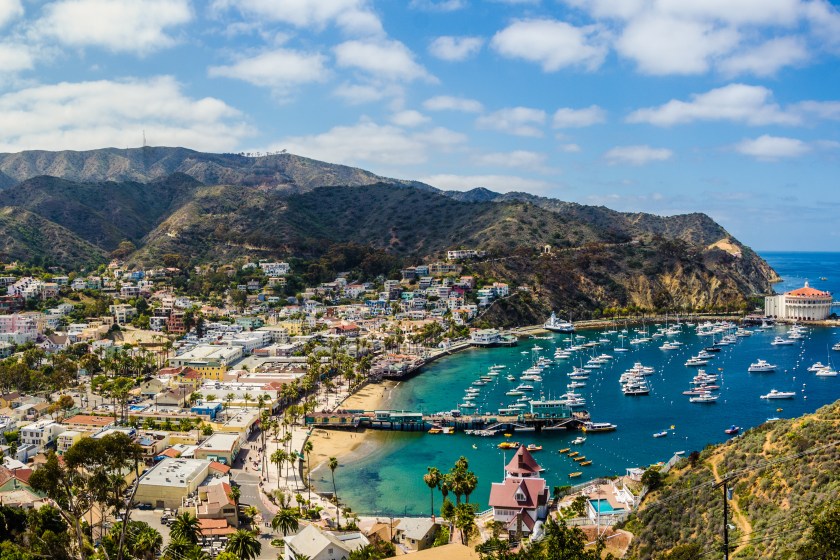
Getty Images, Jasper Chamber
While the proposal to eliminate the mule deer seems critical to conservationists, it received an abundance of backlash from the local community of Avalon, home to about 3,500 people on Catalina.
Some Catalina locals are angry about the proposal's plan to hire wildlife management company White Buffalo Inc., which would use AR-15s with non-lead bullets to shoot the deer from a helicopter, leaving the bodies where they lay.
"Shooting deer from helicopters and leaving them to suffer and their bodies to rot, that is not acceptable by any standard," Debbie Wright, a resident of Avalon for nearly 20 years, told Wide Open Spaces. She adds that she's researched much of White Buffalo's tactics and finds it "alarming who the Conservancy is hiring."
A Change.org petition on the topic has garnered over 15,000 signatures in protest of the "inhumane slaughter" of the deer.
Wright believes the Conservancy could find alternative solutions. "The Conservancy states the deer are preventing the growth of native plants. But, instead of a management plan such as expanding the hunting program to reduce the number of deer to a positive number and protect the plants in question, they have decided to just inhumanely slaughter all of the deer."
Why the Conservancy Is Advocating for Control by Helicopter
One of the reasons Conservancy seems to lean toward helicopter culling (aside from efficiency) is precedent: Catalina's invasive goat population—also brought by humans to the island—was extirpated via aerial and ground sharpshooters in the 1990s.
The Island's feral pig population, originally introduced to eat rattlesnakes on the island, was eradicated around the same time, mostly by ground hunting and the use of dogs. The pigs were monitored and trapped for years until they were selectively slaughtered, a successful conservation effort, according to the Conservancy.
Other Options for Catalina Island's Mule Deer
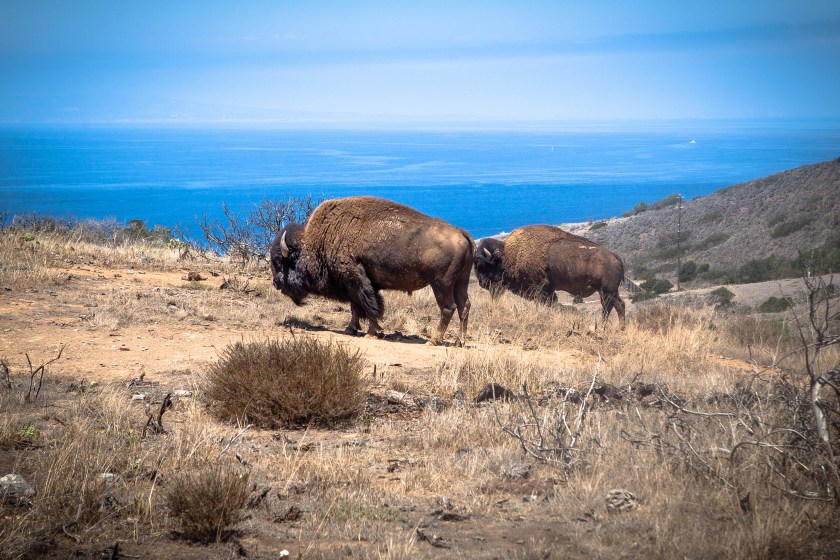
Getty Images, Gary Kavanaugh
Dennhardt says she has spent many hours meeting with local residents and hearing their concerns for the fate of the deer. Of course, there are other seemingly-viable ways to control the deer population, like ground hunting, relocation, and birth control.
Unfortunately, Dennhardt says, many of these alternatives to the White Buffalo helicopter shooting approach are "nearly impossible."
"When deer are captured, they don't handle it well," she says. "They undergo capture myopathy, which essentially causes a much more stressful death for the deer."
Additionally, Dennhardt notes that relocated deer would be maladapted to their new environment.
While those options aren't feasible to the Conservancy, the organization plans to surgically sterilize some deer that locals view as pets due to their proximity to residential areas. The tactic has helped keep the island's bison population at a controllable number—though bison, which were also introduced to the island by humans are much more easily managed because they're herd animals. Administering birth control to animals that tend to stay together and in one place proves much easier than tracking down mule deer, which often run and hide.
Dennhardt says her hope is that sterilizing some of the deer will act as a bridge between the Conservancy and residents who feel this proposal is cruel and unnecessary.
Current Status of Catalina's Mule Deer Culling Proposal
Before commencing its deer culling effort, the Catalina Island Conservancy must secure a permit from the California Department of Fish and Wildlife. Deputy director of communications for the CDFW, Jordan Traverso, confirmed that the permit process is active and ongoing but was otherwise unable to comment at this time.
Traverso wrote to Wide Open Spaces: "The Catalina Island Conservancy has submitted a permit application to CDFW as part of the broader restoration effort, and the application, as well as the Conservancy's broader interest to restore the island are under review at CDFW. The goal of the project is to restore ecosystem function and preserve Catalina's unique and rare biodiversity, including some of the rarest plant species in our state and beyond. The project aims to propagate native flora and fauna which, in turn, improves climate and wildfire resiliency. We're just in the review stages of the permit."
Still, the timing outlined in the proposal is to begin killing the deer in fall of 2024, which the CDFW is expected to approve.
READ MORE: Pet Goldfish Are Destroying Local Waterways
